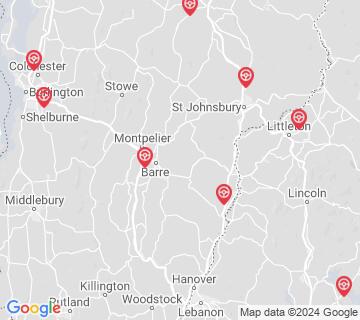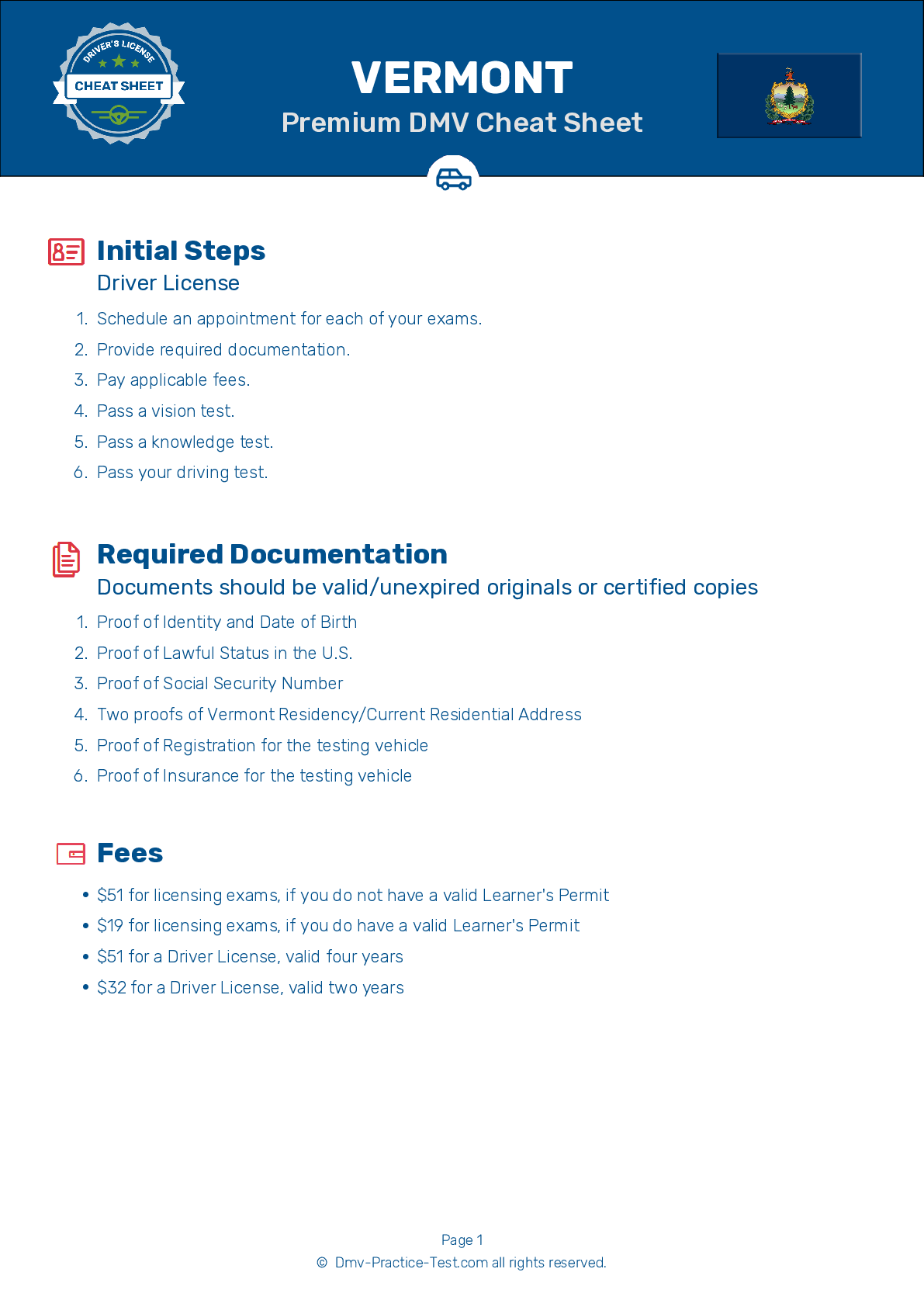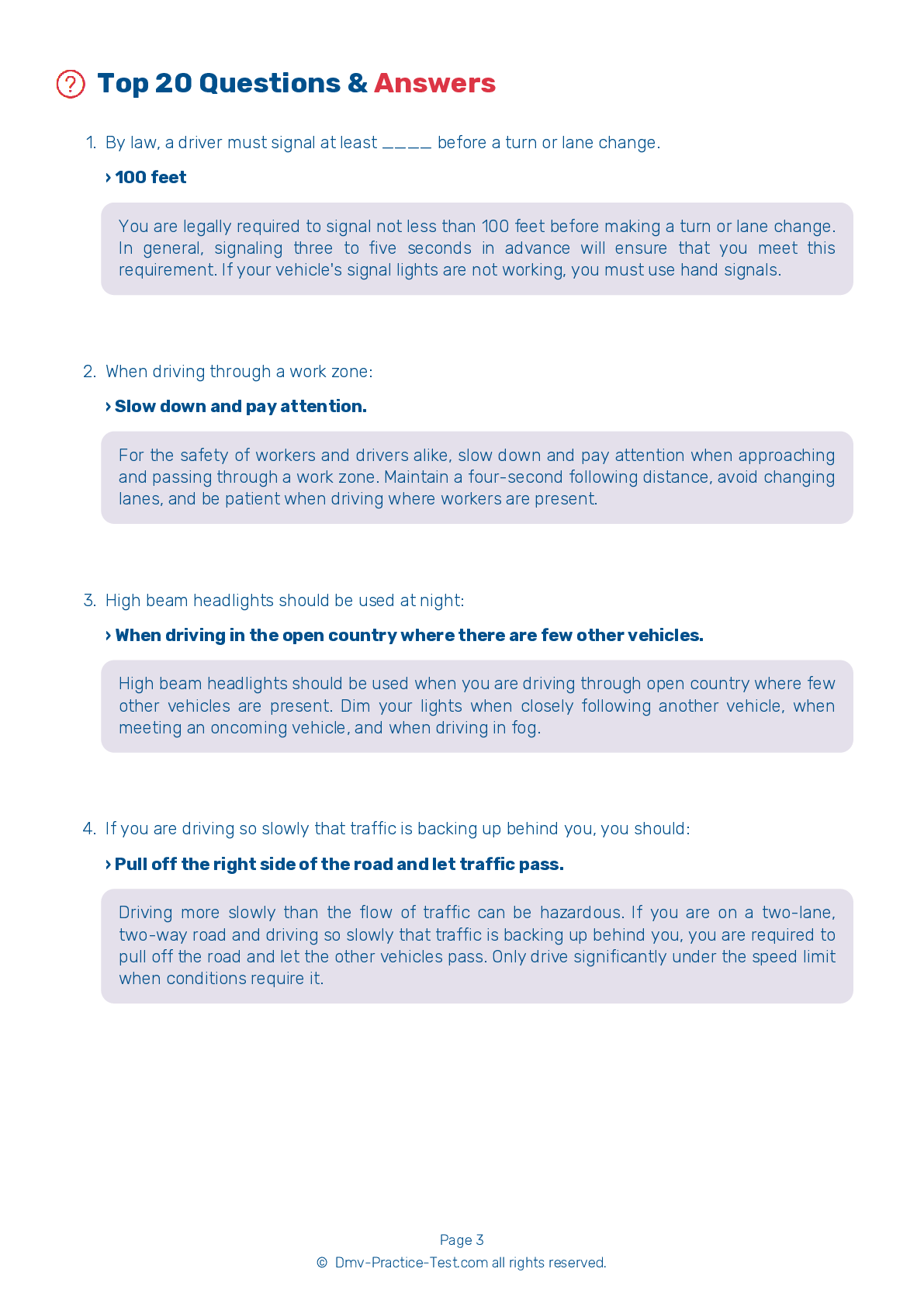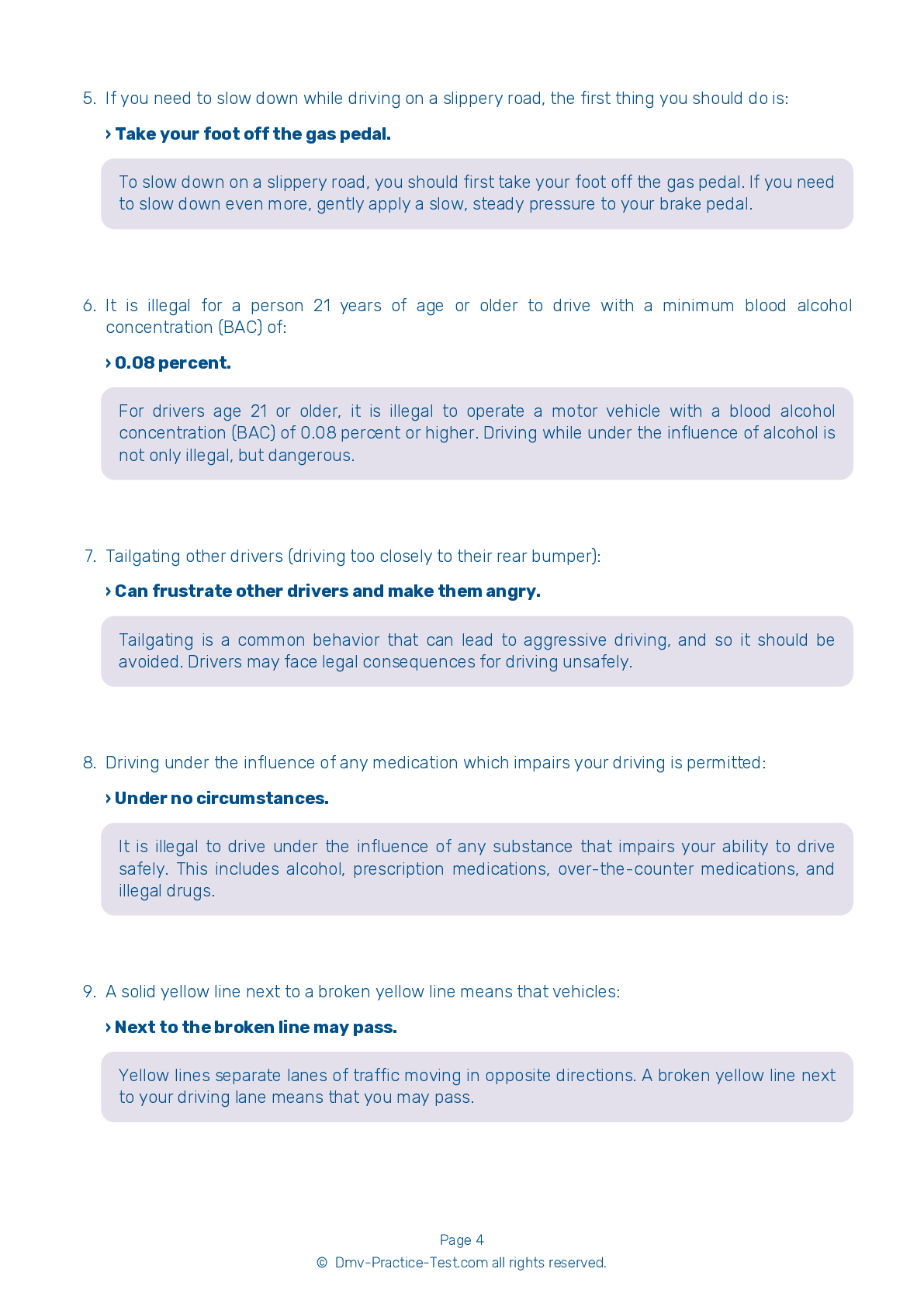FREE Vermont DMV Practice Test #7
The Vermont DMV practise examinations have been updated for January 2025. It includes questions based on the Vermont Driver Handbook's most significant traffic signals and legislation for 2025. Use actual questions that are very similar (often identical!) to the DMV driving permit test and driver's licence exam to study for the DMV driving permit test and driver's licence exam.
On the practise exam, each question gets a tip and explanation to help you remember the concepts. The written component of the official Vermont DMV test will include questions about traffic rules, traffic signs, and driving statutes, as well as knowledge from the Driver Handbook.
To obtain a passing grade, you must correctly answer 16 of the 20 questions. Use the practise exam provided by the Vermont Department of Motor Vehicles to help you prepare for your instruction permit or driver's licence.
The DMV exam is available in several languages.
Using any kind of testing assistance will result in an automatic fail, and the DMV may take additional action against your driver's licence, so stay away from it.
1 . A driver entering interstate traffic from an entrance or acceleration ramp:
If you are on an entrance or acceleration ramp and are entering interstate traffic, you should yield to drivers already on the interstate highway. Merge safely into traffic when you are able to do so.
2 . Which is the most common cause of traffic crashes?
Crashes often occur when one driver does not see another vehicle or when a driver does something unexpected. Communicate with other drivers on the road to help prevent traffic crashes.
3 . Roads become very slippery:
Pavement can become very slippery within the first 10 to 15 minutes of a rainstorm because the rain causes oil in the asphalt to rise to the surface of the road. This problem becomes even worse in hot weather. The heat combined with the water causes more oil to rise to the road surface.
4 . Pentagonal signs indicate:
Pentagonal signs indicate that you are in a school zone. Be extra alert to children and pedestrians when driving near a school.
5 . A driver on an interstate highway must make a safe lane change:
You must change lanes to create more space when approaching a stopped police vehicle with flashing blue lights, a stopped emergency vehicle with flashing red lights, or a stopped maintenance vehicle with flashing amber lights. If you cannot safely move to a different lane, you must slow down.
6 . When driving near heavy trucks, other drivers and highway users must make allowances for:
When driving near heavy trucks, other drivers and highway users must make allowances for the increased stopping distance required by the large vehicles. Drivers of smaller vehicles should remain in locations where they can be seen by the driver of the large vehicle and where their view of traffic is not blocked by the vehicle.
Search the best driving school in your neighbourhood
2025 Vermont | Frequently Asked Questions
1. Not checking mirrors and blind spots before changing lanes or turning.
2. Speeding or driving too slowly for the conditions or posted speed limit.
3. Not coming to a complete stop at stop signs or red lights.
4. Incorrect signalling or not signalling at all.
5. Poor parking, especially parallel parking.
Remember, practice makes perfect, so take time to hone your skills.




